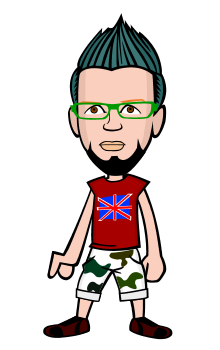Thus, this time we are going to discuss my 10 from two ranges, South America and West Africa. I've found through encounter that both species can endure the same kind of water conditions, with ph underneath 7.5 and gentler water than African Lake Cichlids. The greater part of the species I've kept were for the test of rearing and/or their irregularity. So lets start.
Plate are first on my rundown, and very little needs to be said in regards to these gentlemen. Despite the fact that they've tagged along route during their time as hobbyists jewels, regardless they can give prepared aquarists a migraine with their fairly high-upkeep necessities and affectability to changes in condition. These days, there are such a variety of distinctive specifically reared shade variations that a considerable measure of attendants don't trouble with the commonly wonderful wild plate, which is slightly a disgrace.
Apistogrammas must be second in line. In terms of these little gentlemen it is difficult to pick any one as a top choice. A hefty portion of the private raisers I know have racks of 15 gallon tanks with sets of diverse types of apistos in them. They each one have extraordinary color, incredible character, and they're likewise an extraordinary expansion to a group aquarium.
Dicrossus filamentosus, or the Lyretail Checkerboard Cichlid, is a bit of an intense one. The trap is getting your active great, solid stock. I have kept this species in a 10 gallon with a rosy sand, some driftwood, and leaves from an outside tree which they would dependably use as spread and bringing forth locales. They are truly amusing to watch, and their examples truly are excellent when they're in the right set-up.
Geophagus altifrons is potentially the most stunning of the eartheaters. The most wonderful geo example I have ever seen in individual was at an Ohio cichlid tradition. The individual was pushing 10 inches and its blade expansions were around 6 inches. Such a flawless fish, yet not at all like its cousins it may consume more modest fish. It may not would appear to be much to take a gander at as an adolescent, however provide for it the right conditions and it will astonish you when it develops.
Red Terror Cichlidamphilophus festae, the Red Terror! Presently here's a brute worth keeping! I have really heard stories of females executing grown-up guys, yet in the event that you wind up with a stable pair, there is a ton to anticipate. Guys create turquoise coloration and females are a crimson with dark bars. They can truly "stunning" you on the off chance that you can do it right!
Pseudocrenilabrus nicholsi, otherwise called Nichol's Dwarf Mouthbrooder, is a striking 4 inch sparkler that hails from the streams of West Africa. Guys display a metallic blue to turquoise body with a bronze head, blue cheeks and red striations in the body and balances. They are totally perfect and they can endure wide water conditions.
Pelvicachromis taeniatus "Wouri" is a variation worth searching out. In crack lake cichlids, the guys are the brilliant ones, yet in West Africa, its ordinarily the females. This 3 inch fish is one of numerous shade strains, every one distinguished by the area they are gathered. The guys are tan with yellow lips and some yellow in the balances. Females, then again, have a violet-red gut encompassed by a ring of light blue. Amid rearing stages, they turn yellow, frequently gold.
Tilapia joka is an uncommon, and not really bright West African. When I kept these fellows, they were otherwise called the "poor mans tropheus". This species gets to around 8 inches in the wild, however just around 5 inches in the home aquarium. Both male and female have the same color with 8 to 9 yellow vertical bars on a dull body. Guys have stretched butt-centric and dorsal balances tipped in white.
Stomatepia pindu is a 4 to 5 inch West African predator. It wears some exceptionally intriguing color and conduct, however is not regularly seen in the exchange. At the point when kept appropriately grown-up people are totally dark in shade, body and balances, with rosy to tan eyes. Now and again they additionally swim around eagerly, and different times they like to lay at the lowest part. Some accept this could be a specific conduct showed when holding up for prey.
Thorachromis brauschi is a 5 inch West African species. We have conveyed this tempermental species several times, yet it still isn't what I would consider normal. Guys sport an extremely wonderful color, actually when not in rearing dress. It comprises of a yellow-gold body with a white gut, and red through the throat that can stretch out into the stomach. I have seen guys in shade at 2 inches long.
Plate are first on my rundown
Posted on at



